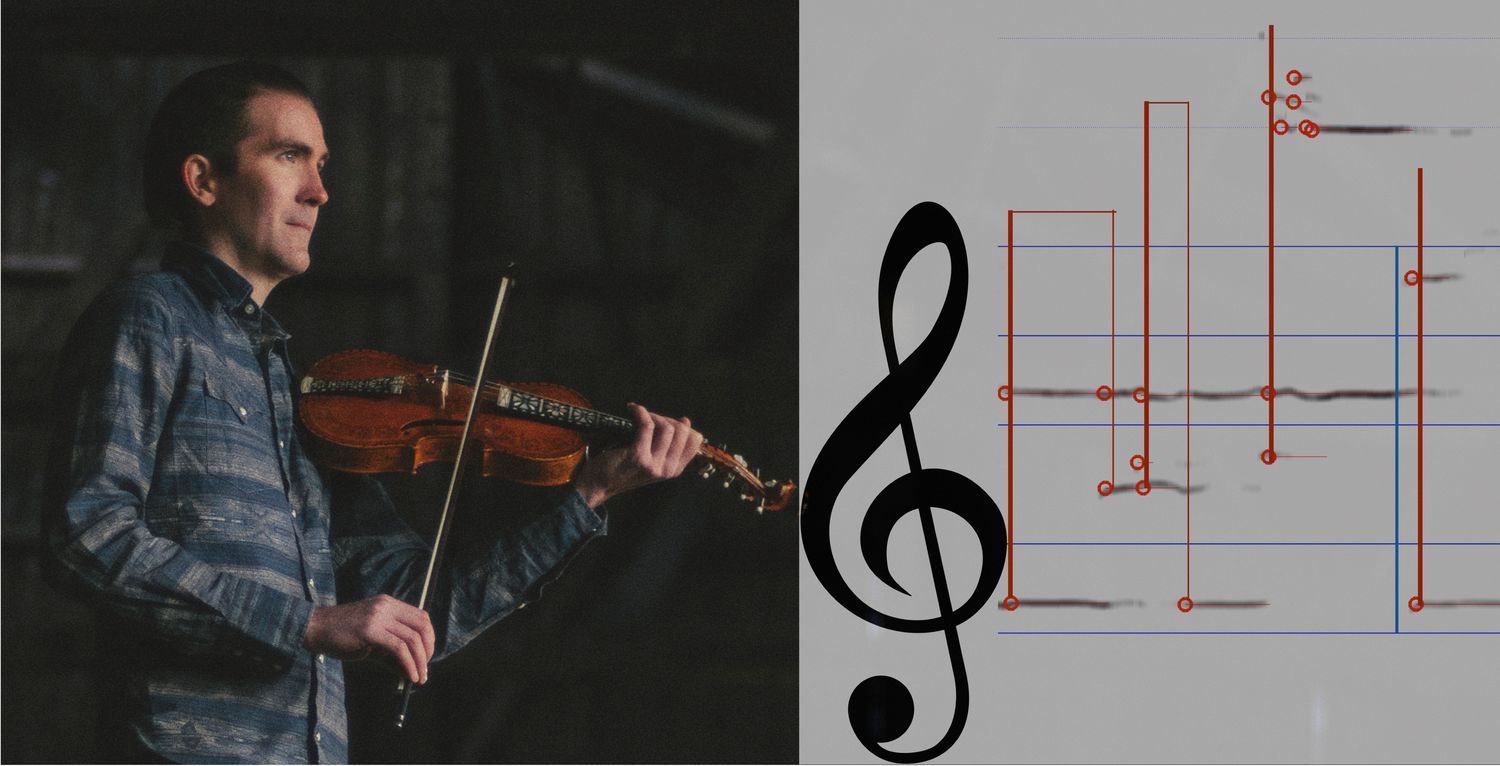Home>Production & Technology>Music Theory>What Should I Do For My Music Theory Analysis Project


Music Theory
What Should I Do For My Music Theory Analysis Project
Published: January 31, 2024
Looking for ideas for your music theory analysis project? Explore unique and innovative approaches to studying music theory and enhance your understanding of the subject with our helpful tips and suggestions.
(Many of the links in this article redirect to a specific reviewed product. Your purchase of these products through affiliate links helps to generate commission for AudioLover.com, at no extra cost. Learn more)
Table of Contents
- Introduction
- Choosing a Music Piece for Analysis
- Understanding the Basics of Music Theory Analysis
- Analyzing Melody and Harmony Patterns
- Examining Rhythm and Meter
- Exploring Form and Structure
- Interpreting Dynamics and Articulation
- Considering Cultural and Historical Context
- Presenting Your Music Theory Analysis Project
- Conclusion
Introduction
Welcome to the world of Music Theory analysis! If you’re a student of music or simply have a passion for understanding the inner workings of musical compositions, then you’ve come to the right place. Music Theory analysis is a fascinating endeavor that allows us to explore and dissect the various elements that make up a piece of music, unlocking its secrets and deepening our appreciation of its beauty.
Whether you’re working on a music theory analysis project for a class or simply want to delve deeper into your favorite musical pieces, this article will guide you through the process and provide you with valuable insights to make your analysis successful.
In this article, we’ll discuss the steps involved in a music theory analysis project, from choosing a suitable music piece to presenting your findings. We’ll explore various aspects of music theory, including melody, harmony, rhythm, form, and more, that you can analyze to understand the composition better. We’ll also touch on the importance of considering the cultural and historical context of the music.
By the end of this article, you’ll have a clear understanding of how to approach a music theory analysis project and be equipped with the necessary tools to dive deep into the music you love.
So, get ready to embark on a journey of exploration and discovery as we delve into the world of music theory analysis!
Choosing a Music Piece for Analysis
When embarking on a music theory analysis project, one of the first and most crucial steps is selecting a suitable music piece to analyze. The choice of music piece will significantly impact the depth and scope of your analysis. Here are a few considerations to keep in mind when selecting a music piece:
- Choose a piece that interests you: It is essential to choose a music piece that resonates with you. Whether it’s a classical symphony, a jazz standard, or a pop song, selecting a piece that you genuinely enjoy will fuel your passion and drive throughout the analysis process.
- Consider the complexity: Analyzing a complex piece of music can be challenging yet rewarding. It allows for a deeper exploration of intricate musical elements such as complex harmonies, unusual time signatures, and advanced compositional techniques. On the other hand, analyzing a simpler piece may be more accessible for beginners or when time is limited.
- Balance familiarity and novelty: Finding a balance between choosing a familiar piece and exploring something new can add excitement to your analysis. Analyzing a familiar piece allows you to gain a deeper understanding of a composition you already love, while analyzing an unfamiliar piece provides an opportunity to discover new musical styles and techniques.
- Consider the availability of resources: Ensure that there are reliable resources available for the chosen music piece. This includes sheet music, recordings, and scholarly articles or books that can provide valuable insights into the composition. Availability of resources will greatly facilitate your analysis process.
Once you have considered these factors, make a list of potential music pieces that meet your criteria. Take the time to listen to each piece attentively and evaluate their musical elements, overall structure, and emotional impact. Consider seeking guidance from your music teacher, mentor, or peers for their input on the suitability of your choices.
Ultimately, the music piece you choose should inspire you and ignite your curiosity to explore its intricate elements. With a well-chosen music piece, you will embark on a fulfilling and enlightening journey of music theory analysis.
Understanding the Basics of Music Theory Analysis
In order to conduct a successful music theory analysis, it is essential to have a solid understanding of the basics of music theory. This foundation will provide you with the necessary tools to analyze and interpret various musical elements within a composition. Here are some key concepts to grasp:
- Musical notation: Familiarize yourself with musical notation, including reading and interpreting sheet music. This will enable you to identify and analyze the different musical symbols, such as notes, rests, time signatures, key signatures, and dynamics.
- Scales and modes: Learn about different scales and modes, such as major, minor, pentatonic, and modes of the major scale. Understanding scales and modes will help you identify the tonal framework of a composition and analyze how melodic and harmonic elements are constructed.
- Chords and harmony: Study the basics of chord construction, chord progressions, and harmonic analysis. This involves identifying and analyzing the chords used in the music piece, their relationships to each other, and how they contribute to the overall harmonic structure.
- Melody and counterpoint: Explore the concept of melody and counterpoint, including the relationship between multiple melodic lines. Analyzing the melodic elements within a composition will allow you to understand the themes, motives, and melodic development used by the composer.
- Rhythm and meter: Gain a solid understanding of rhythmic concepts, including note durations, time signatures, and rhythmic patterns. Analyzing the rhythmic elements within a composition will provide insights into its energy, pacing, and overall feel.
- Form and structure: Learn about musical forms and structures, such as binary form, ternary form, sonata form, and rondo. Understanding the structure of a composition will enable you to identify sections, transitions, and recurring themes, enhancing your analysis of its overall organization.
By familiarizing yourself with these fundamental concepts, you will develop a strong foundation for your music theory analysis. Remember to apply these concepts as you listen critically to the music piece, identifying and analyzing the various elements that contribute to its overall structure and artistic expression.
Additionally, resources such as music theory textbooks, online courses, and tutorials can provide further in-depth knowledge and practical examples to enhance your understanding of music theory analysis. Embrace the learning process, and don’t hesitate to seek guidance from teachers or mentors who can provide valuable insights and support your growth in music theory analysis.
Analyzing Melody and Harmony Patterns
One of the key elements of music theory analysis is the examination of melody and harmony patterns within a composition. Melody represents the main musical line or lines, while harmony refers to the chords and the way they interact with the melody. Analyzing melody and harmony patterns allows us to understand the overall structure, emotional character, and artistic intentions of the piece. Here are some essential aspects to consider when analyzing melody and harmony:
- Melodic contour: Analyze the shape and trajectory of the melody. Does it ascend, descend, or fluctuate? Is it predominantly steps, skips, or leaps? Understanding the melodic contour helps identify recurring motifs, melodic development, and emotional shifts within the composition.
- Melodic intervals: Investigate the intervals between the pitches of the melody. Are they primarily small intervals (seconds and thirds) or larger intervals (fourths, fifths, etc.)? The use of particular intervals can create tension, resolution, or distinct melodic characteristics.
- Melodic ornamentation: Note any embellishments, trills, grace notes, or other decorative elements in the melody. These ornamentations often add flair and individuality to the composition, showcasing the artist’s personal style and expression.
- Harmonic progression: Identify the chords and their progression throughout the composition. Determine the tonal key and analyze the relationships between the chords. Look out for common progressions, such as the authentic cadence (V-I), which can provide insights into the harmonic stability and direction of the piece.
- Chord voicing: Pay attention to how the individual notes of a chord are distributed and voiced. This can influence the overall harmonic texture and the mood of the composition. Analyzing chord voicings helps understand the balance, tension, and coloration within the harmony.
- Harmonic rhythm: Observe the rate and regularity at which the chords change. Does the composition have a consistent harmonic rhythm, or are there variations? Understanding the harmonic rhythm allows us to appreciate the pacing and dynamics of the piece.
As you analyze melody and harmony patterns, consider their interplay and how they contribute to the overall emotion, tension, and resolution within the composition. Are there moments of consonance or dissonance? Are there melodic or harmonic motifs that are repeated or developed throughout the piece?
Remember, the analysis of melody and harmony patterns is an opportunity to dive deep into the intricacies of the composition and uncover the intentional choices made by the composer. Embrace the beauty of these musical elements and let them guide your exploration and interpretation of the piece.
Examining Rhythm and Meter
When analyzing a music piece, it is essential to examine the rhythm and meter to gain a deeper understanding of its structure and overall musical expression. Rhythm and meter play a vital role in shaping the character, energy, and flow of the composition. Here are some key aspects to consider when examining rhythm and meter:
- Rhythmic patterns: Identify recurring rhythmic patterns within the music. Look for motifs or rhythmic cells that are repeated throughout the piece, as well as variations or development of these patterns. Analyzing rhythmic patterns will help you understand the rhythmic cohesion and unity of the composition.
- Tempo: Determine the tempo or speed at which the composition is played. Consider the tempo’s effect on the emotional tone and energy of the music. Is it fast-paced and exhilarating or slow and reflective?
- Meter: Analyze the meter or time signature of the composition. Determine whether it is in duple, triple, or compound meter. Understanding the meter helps identify recurring rhythmic groups and accents, contributing to the rhythmic stability and organization of the piece.
- Rhythmic accents: Pay attention to the emphasis placed on certain beats or notes within the rhythm. Accents can create rhythmic tension, syncopation, or a sense of forward momentum. Examine the placement of accents and how they contribute to the rhythmic character of the composition.
- Polyrhythms and syncopation: Look for instances of polyrhythms, where two or more contrasting rhythmic patterns are layered simultaneously. Similarly, examine syncopated rhythms, where accents are placed on weak beats or offbeat moments. These rhythmic techniques can create tension, complexity, and rhythmic interest within the composition.
- Rhythmic variation and dynamics: Consider any changes in rhythm and dynamics throughout the composition. Are there moments of rhythmic intensity followed by moments of relaxation? Understanding these fluctuations in rhythm and dynamics adds depth and variation to the musical experience.
As you examine rhythm and meter, listen attentively to the interplay between rhythmic elements and other musical components such as melody and harmony. The rhythm sets the foundation and serves as a driving force, shaping the overall structure and emotional impact of the music.
Remember to approach the analysis of rhythm and meter with a sense of curiosity and openness. Let the rhythmic nuances guide you on a rhythmic journey, bringing the music to life and unearthing the skilled craftsmanship of the composer.
Exploring Form and Structure
Understanding the form and structure of a music composition is crucial for a comprehensive music theory analysis. Form refers to the overall organization and arrangement of musical elements, while structure refers to the smaller sections that make up the composition. Analyzing the form and structure provides insights into the compositional choices, dramatic pacing, and overall narrative of the music. Here are key aspects to consider when exploring form and structure:
- Musical phrases and sections: Identify the musical phrases and sections within the composition. Look for recurring motifs or themes that define each section. Analyzing phrases and sections helps you comprehend how the music is organized and provides insights into the coherence and balance of the composition.
- Formal patterns: Examine the overall formal structure of the piece. Common musical forms include binary (two-part), ternary (three-part), sonata-allegro, and rondo forms. Determine if the composition adheres to a specific formal pattern or if it deviates and combines different forms. Understanding the formal patterns guides your analysis of the composition’s hierarchy, contrasts, and dramatic arcs.
- Transitions: Pay attention to the transitional moments between sections or phrases. Analyze how these transitions create smooth connections or contrasts between musical ideas. Transitions often play a crucial role in driving the narrative and maintaining the listener’s engagement.
- Repetition and variation: Identify instances of repetition and variation within the composition. Does the piece use exact repetitions or introduce variations of themes or motifs? Analyzing repetition and variation helps you appreciate the recurring elements and understand the composer’s artistic intentions.
- Climaxes and resolutions: Examine the points of culmination and release within the composition. Note any climactic moments where tension and intensity reach their peak and identify the resolutions that follow. Understanding the climaxes and resolutions contributes to the emotional impact and narrative arc of the music.
- Bridges and codas: Look for any bridging passages or codas that link different sections of the composition. Analyze how these passages provide a sense of continuity or closure, bringing cohesion and unity to the overall structure of the music.
As you explore form and structure, listen attentively to the relationships between different sections, the pacing of the composition, and the development of musical ideas. Consider the impact of the form and structure on the emotional journey and narrative of the music.
Remember that music compositions can vary in their complexity and adherence to traditional forms. Some compositions may defy categorization or incorporate elements from multiple forms. Embrace the unique aspects of the composition you are analyzing and allow its form and structure to guide your interpretative journey.
Interpreting Dynamics and Articulation
Interpreting dynamics and articulation is a crucial part of music theory analysis as it helps reveal the nuances, expression, and emotional depth of a composition. Dynamics refer to the variations in volume and intensity, while articulation refers to the manner in which individual notes or phrases are played. Analyzing dynamics and articulation provides insights into the intended musical interpretation and the composer’s expressive intentions. Here are some key aspects to consider when interpreting dynamics and articulation:
- Dynamics markings: Identify and analyze the dynamic markings indicated in the sheet music, such as piano (soft), forte (loud), crescendo (gradually getting louder), decrescendo (gradually getting softer), or accents. Pay attention to how these markings enhance the emotional impact and shape the overall musical narrative.
- Dynamic contrasts: Observe the contrasting dynamics within the composition. Examine moments of sudden dynamic changes or gradual shifts between soft and loud sections. These contrasts contribute to the overall musical tension, release, and dramatic effect.
- Articulation markings: Study the articulation markings, such as staccato (short and detached), legato (smooth and connected), or accents. Analyze how these markings shape the phrasing, emphasis, and expressive character of the music.
- Expressive techniques: Explore the expressive techniques employed in the composition, such as rallentando (gradually slowing down), accelerando (gradually speeding up), or fermata (holding a note or phrase longer than its indicated value). Understanding these techniques helps you capture the intended emotions and convey the intended musical interpretation.
- Phrasing: Analyze the phrasing within the composition. Identify where phrases begin and end, and observe any legato or articulated connections between them. Analyzing phrasing helps you understand the breath and flow of the music, as well as the natural shaping of musical ideas.
- Emotional nuances: Pay attention to the emotional nuances that dynamics and articulation convey. Does the music evoke a sense of joy, sadness, tension, or excitement? Consider how the interplay of dynamics and articulation contributes to these emotional nuances.
As you interpret dynamics and articulation, listen attentively to the subtle changes in volume, the shaping of individual notes and phrases, and the overall expressive character of the composition. Consider how the dynamics and articulation enhance the overall musical experience and contribute to the communication of the composer’s intended emotions.
Remember that while the sheet music provides indications for dynamics and articulation, the performer’s interpretation also plays a significant role in bringing the music to life. Different performers may interpret dynamics and articulation differently, adding their own expressive flair to the composition. Embrace the freedom of interpretation and allow dynamics and articulation to guide your understanding and analysis of the music.
Considering Cultural and Historical Context
When conducting a music theory analysis, it is essential to take into consideration the cultural and historical context in which the composition was created. Understanding the cultural and historical influences at play provides valuable insights into the composer’s intentions, societal norms, and artistic movements of the time. Here are some key aspects to consider when exploring the cultural and historical context:
- Composer’s background: Research the composer’s life, upbringing, and musical training. Consider how their cultural background and personal experiences might have influenced their musical style and choices.
- Historical period and musical style: Study the historical period in which the composition was created. Familiarize yourself with the predominant musical styles, techniques, and trends of that era. This knowledge helps you contextualize the piece within the broader music landscape of its time.
- Social and political influences: Investigate the social and political climate during the composition’s creation. Consider the impact of cultural events, societal changes, or political movements on the composer’s mindset and artistic expression.
- Musical conventions and traditions: Examine the musical conventions and traditions of the composer’s era and location. Consider the prevailing compositional practices, harmonic language, and formal structures of that time. This awareness sheds light on the compositional choices and artistic innovations within the piece.
- Symbolism and cultural references: Look for any symbolic or cultural references within the composition. This could include musical motifs associated with a particular culture or references to historical events or literary works. Identifying these references allows for a deeper understanding of the composer’s intentions and the cultural significance of the music.
By considering the cultural and historical context, you gain a more well-rounded perspective on the music piece under analysis. It helps you grasp the artistic intentions, interpretive choices, and the societal impact of the composition.
Remember that the cultural and historical context should not dictate your personal interpretation or analysis of the music piece. It provides a framework for understanding the composition’s significance within its time and place, while allowing for individual interpretation and appreciation of its artistic merits.
Presenting Your Music Theory Analysis Project
After conducting a thorough music theory analysis, presenting your findings effectively is essential to convey the insights and interpretations you have gained from the composition. Here are some key considerations to keep in mind when presenting your music theory analysis project:
- Clear and concise explanations: Clearly articulate your analysis by providing concise explanations of the musical elements you have examined. Use language that is accessible to your audience, avoiding excessive technical jargon unless presenting to a specialized audience.
- Visual aids: Enhance your presentation by incorporating visual aids such as musical notation examples, diagrams, or charts. Visual representations help to illustrate your analysis and make it easier for your audience to follow along.
- Audio examples: Include audio examples of the music piece or specific excerpts that support your analysis. These examples offer a more immersive experience for your audience, allowing them to hear the nuances and musical elements discussed in your presentation.
- Comparative analysis: If applicable, consider comparing the music piece you analyzed with other compositions from the same era or style. This comparative analysis can provide additional insights into the uniqueness or similarities of the piece and further enrich your presentation.
- Personal insights and interpretations: Share your own personal insights and interpretations based on your analysis. Discuss the emotional impact, compositional techniques, or artistic choices that resonate with you. Including your perspective adds depth and invites engagement from your audience.
- Engage with the audience: Foster audience engagement by encouraging questions, discussions, or interactive elements during your presentation. This allows for a more dynamic and enriching exchange of ideas and perspectives.
- Cultural and historical context: Provide brief background information about the cultural and historical context in which the composition was created. This gives your audience a broader understanding of the significance and impact of the piece within its cultural and historical milieu.
- Confidence and passion: Present your analysis with confidence and passion. Clearly convey your enthusiasm for the music and your findings, as this will captivate your audience and create a memorable and engaging presentation.
Remember to tailor your presentation to the specific audience and the setting in which you are presenting. Adapt your language, examples, and level of detail to ensure that your analysis is accessible and engaging to those listening.
By effectively presenting your music theory analysis project, you have the opportunity to not only showcase your analytical skills but also to deepen others’ appreciation and understanding of the musical composition.
Conclusion
Music theory analysis is a captivating journey that allows us to explore the intricate inner workings of a composition. By delving into the melody, harmony, rhythm, form, dynamics, and cultural context, we gain a deeper understanding of the music’s structure, meaning, and artistic intentions.
Throughout this article, we have discussed the key steps and considerations involved in a music theory analysis project. From choosing a suitable music piece to presenting your findings, each stage plays a vital role in unraveling the complexities and beauty of the composition.
Remember the importance of understanding the basics of music theory, such as notation, scales, chords, and melody. These foundational elements set the stage for diving into more intricate aspects of analysis, including dynamics, articulation, and the interplay of rhythm and meter.
Furthermore, exploring the form, structure, and cultural and historical context of a composition provides valuable insights into the composer’s artistic choices and the broader musical landscape of the time.
As you embark on your music theory analysis journey, approach it with curiosity, openness, and a passion for exploring the depths of the music. Be mindful to balance technical analysis with personal interpretation and subjective experiences, allowing your own insights to shape your analysis.
When presenting your music theory analysis project, clearly communicate your findings, utilize visual and audio aids, and engage your audience to create a memorable and captivating presentation. Remember to share your passion for the music, as your enthusiasm will invoke curiosity and invite others to join you on this musical voyage.
Whether you are a student, a musician, or simply an avid appreciator of music, music theory analysis offers an opportunity to unlock the secrets and intricacies of the compositions that move us. Embrace this journey of exploration and let the language of music guide you to new depths of understanding and appreciation.











